Introduction to the origin of Arabica coffee beans introduction to Arabica Coffee Manor
Among the kinds of coffee we usually drink, we often see Arabica and Robusta, while Arabica varieties are mostly boutique coffee, and Robusta varieties are more blended or Italian coffee.
Ethiopia is the birthplace of coffee and the birthplace of the famous Arabica coffee beans. In Ethiopia, people have been harvesting wild coffee beans so far.
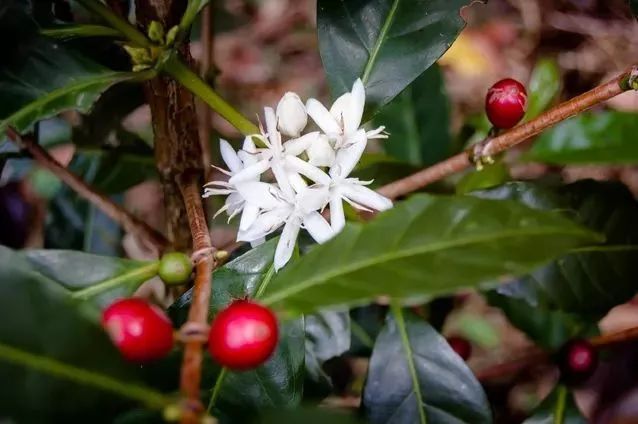
Tradition. Ethiopia has the most diverse species on earth. The main producing areas are Sidama, Yirgacheffe, Kochere, Harar, and Djimmah (there are many different spellings of English place names in Ethiopia). Ethiopia is a rare native place, and there are countless native wild varieties that have not yet been discovered. Most of the coffee varieties in Central and South America are introduced from Ethiopia.
Arabica variety, scientific name coffee Arabica, origin is Ethiopia's Abyssinia plateau (now the Ethiopian plateau), initially mainly used as medicine to eat, the 13th century to cultivate the habit of baking and drinking, the 16th century through the Arab region in Europe, and then become a common favorite drink all over the world. The resistance to nature's dryness, frost, diseases and insect pests is too low, especially the natural enemy of coffee-leaf rust. Arabica is mainly produced in South America, Central America, Africa (East African countries) and Asia (including parts of Yemen, India and Papua New Guinea). Caffeine is about 1.5%.
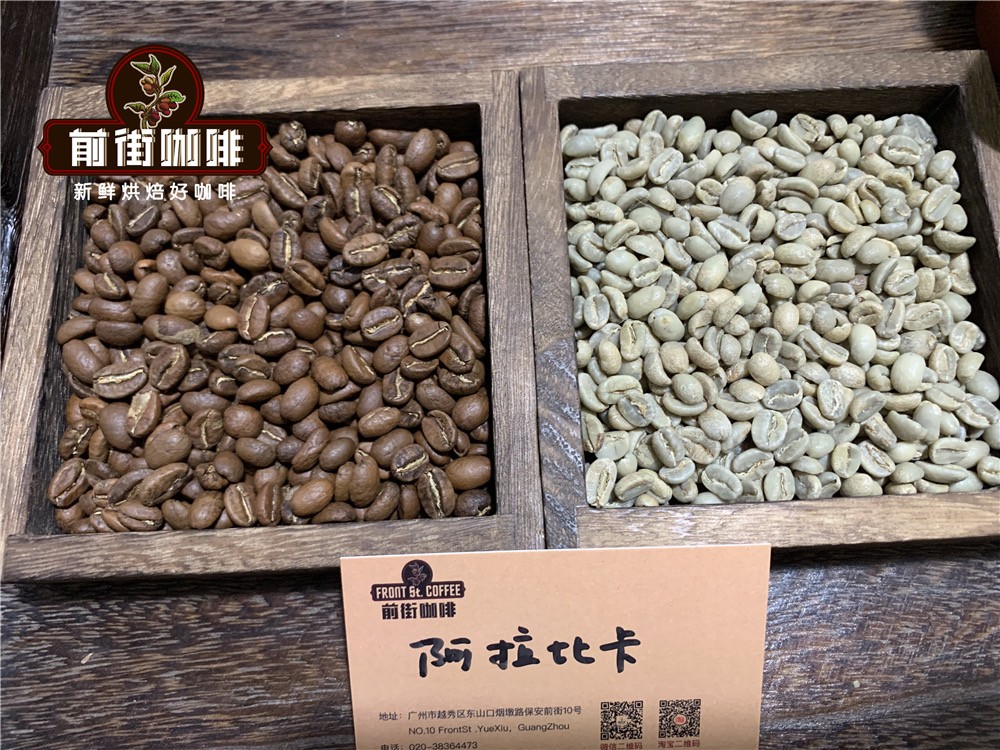
The Robusta variety, the scientific name coffee RobustaLinden, is more resistant to leaf rust than the Arabica variety found in the African Congo. In fact, it was a mutant of the Congo species (scientific name Coffeacanephora). The name of the Robusta species has become popular, and it is regarded as the same species as the Congolese species. This has a unique aroma (called "Luobu smell", which some people think is moldy) and bitter, and is generally used in industrial coffee, such as instant coffee, bottled coffee, liquid coffee, or in a small amount in blended coffee. The caffeine content is about 3.2%.
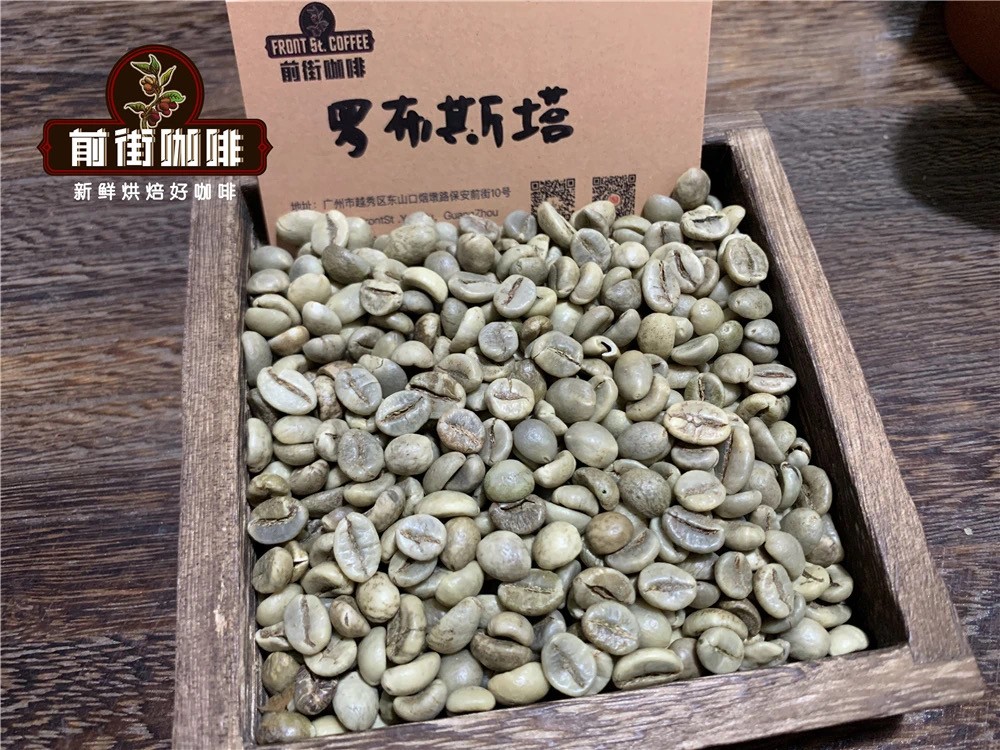
Ethiopia's geographical environment is very suitable for coffee growth. Coffee is mainly grown in the southern highlands between 1100 and 2300 meters above sea level. After more than a thousand years of evolution and adaptation, a unique coffee style has been formed. Ethiopian coffee grown in the natural wild environment is called "wilderness coffee", which retains the most primitive and natural taste of coffee beans. it has the most direct and full expression to the soil. Ethiopia has a unique flavor that is different from other flavors and provides customers all over the world with a wide range of taste choices.
In the highlands of southwestern Ethiopia, the Kaffa, Sheka, Gera, Limu and Yayu Senri coffee ecosystems are considered the hometown of Arabica coffee. These forest ecosystems also have a variety of medicinal plants, wild animals and endangered species.
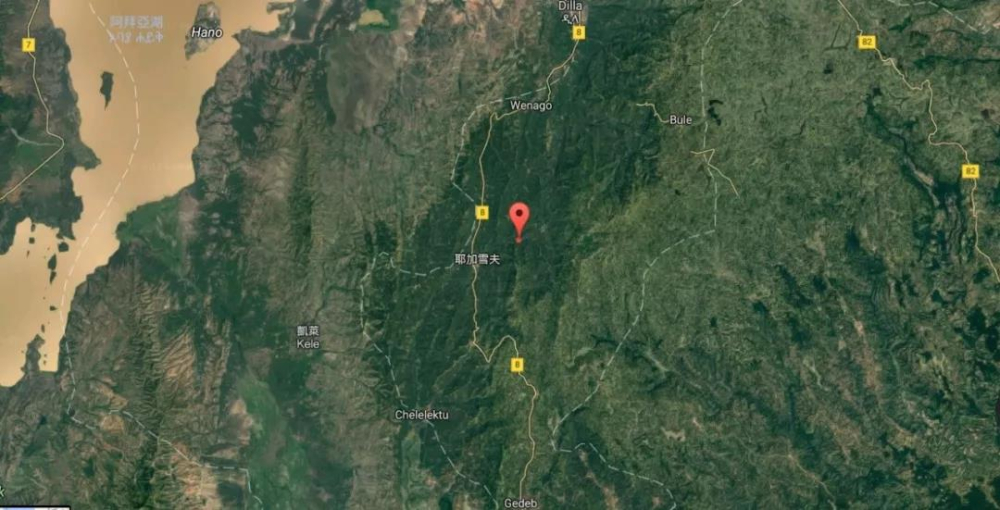
The full name of the Federal Democratic Republic of Ethiopia (formerly known as Abyssinia) is a country located in northeast Africa. English name: The Federal Democratic Republic of Ethiopia, Ethiopia is the country of origin and hometown of coffee. Ethiopia has unique natural conditions suitable for growing all imaginable varieties of coffee. As a highland crop, Ethiopian coffee beans are mainly grown in areas between 1, 100 and 2300 meters above sea level, roughly distributed in southern Ethiopia. Deep soil, well-drained soil, weakly acidic soil, red soil and soft loam soil are suitable for growing coffee beans because these soils are nutritious and humic. Precipitation is evenly distributed during the seven-month rainy season; during the plant growth cycle, fruits blossom to fruit and crops grow by 90-2700 mm per year, while temperatures fluctuate between 15 and 24 degrees Celsius throughout the growth cycle. A large amount of coffee production (95%) is done by small shareholders, with an average yield of 561 kg per hectare.
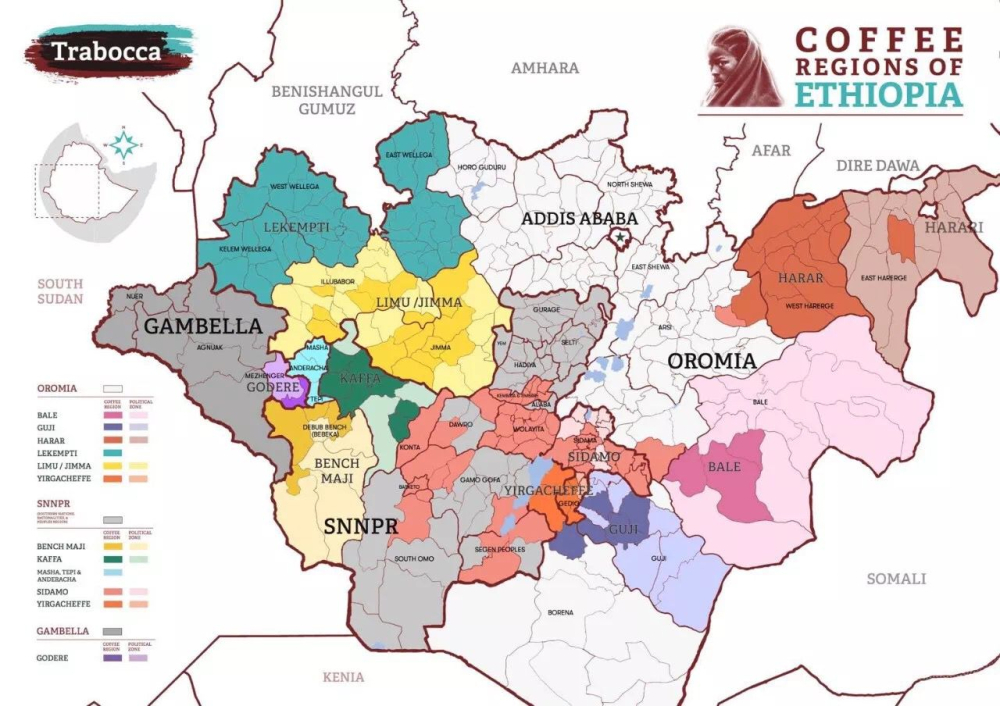
For centuries, minority holders of Ethiopian coffee farms have been producing a variety of high-quality types of coffee. The secret to producing high-quality coffee is that coffee growers have developed a coffee culture in a suitable environment through generations of repeated learning about the coffee growing process, which mainly includes farming methods using natural fertilizers, picking the reddest and fully ripe fruits and processing the fruits in a clean environment. Differences in the quality, natural characteristics and types of Ethiopian coffee come from altitude, region, location, and even land types.
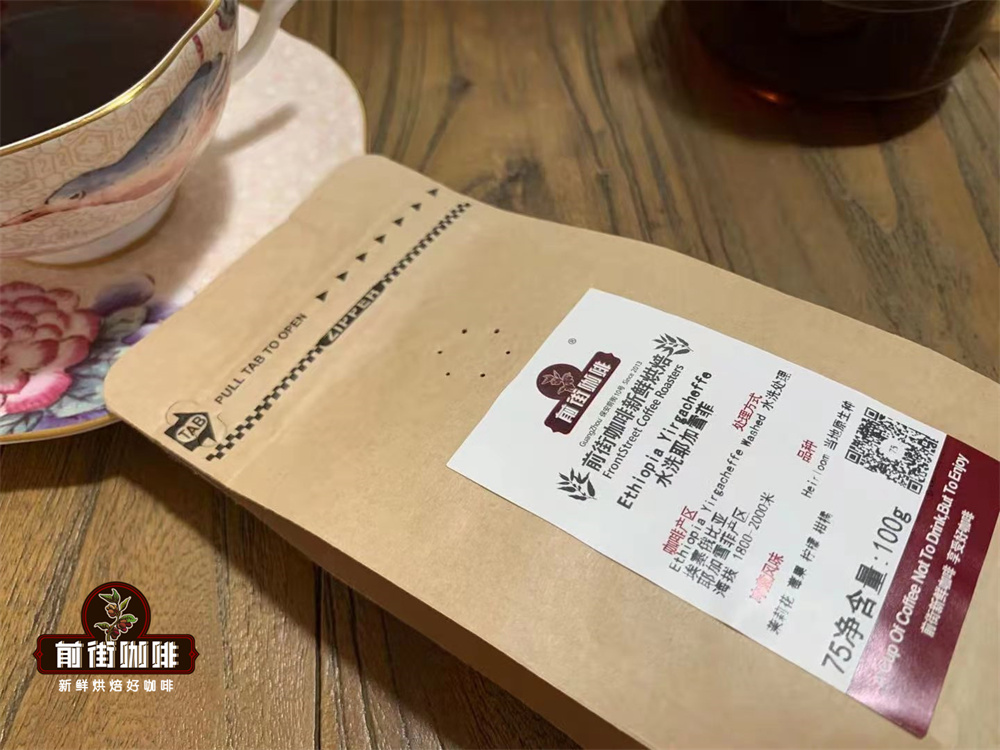
The trace element in each producing area will make the flavor of the coffee different, and Qianjie has more than a dozen coffee beans from different producing areas of Ethiopia in order to let everyone taste more of the flavor of the different producing areas of the coffee.
Sidamo, Yega Xuefei, and Kochare are the main producing areas of fine washed beans. The best-known Yegashifi is a small city north of Sidamo, with an average elevation of between 1850 and 2400 and an average annual rainfall of 1300mm. Because of its unique geographical environment and special flavor, it is independent from the Sidamo producing area. Yega Chuefei is famous for its perfume, jasmine and citrus features. Sun Yega Chevy has a strawberry and creamy taste, while Hara / Sidamo has a wild blueberry flavor.
Yejia Xuefei coffee producing area
Yega Xuefei Coffee producing area is a famous boutique coffee producing area in Ethiopia, mainly for washing treatment. The coffee here has rich floral and citrus flavors. And one of the rations beans of Qianjie Coffee is the washed Yega Xuefei as the coffee representative of the Ethiopian coffee producing area. Its fresh and bright citric acid and citrus aftertaste make everyone memorable, and you will fall in love with it.
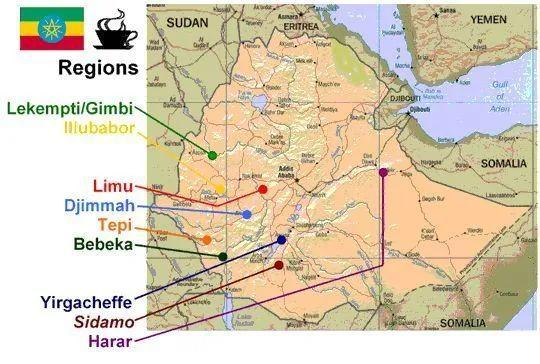
Yirgacheffe is a small town in Ethiopia, 1700 to 2100 meters above sea level, which can be said to be synonymous with Ethiopian boutique coffee. It has been a wetland since ancient times, and the ancient saying "yirga" means "settle down" and "cheffe" means "settle down in this wetland". At first, Yegashafi was a by-product area of Ethiopia's Sidamo province, northwest of Sidamo, and was one of the highest coffee-producing areas in Ethiopia. Because the mode of production and flavor here are so outstanding, Ethiopian coffee farmers compete to take pride in the flavor of their coffee, so they are independent from the Sidamo region to become the most famous producing area in Africa.
Sidamo-Humbera coffee producing area
As a boutique coffee producing area, Sidamo has both water washing and sun exposure, and the most representative of Qianjie coffee is Sun Coffee Sakui 5.0. Huakui 5.0 has floral, tropical fruit, berry, citrus sweetness and rich taste. So, in the front street, this coffee bean is very popular. Humbera was originally a sub-region of Guji, a sub-region of Sidamo, and is under the jurisdiction of Oromiyaa, the southernmost administrative state of Ethiopia. It is 3200m away from Kochere, a snow-producing region of Yega, to the west, Shakiso to the east, Uraga to the south and Cochelle Kercha to the north.
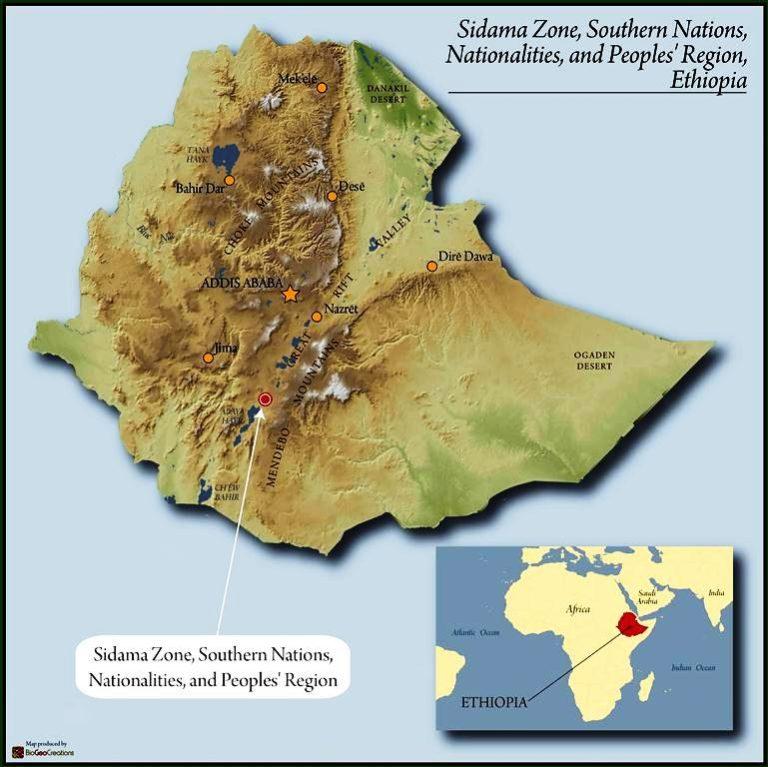
At present, there are about 20 treatment plants in Hambelane, which are distributed in different villages and estates of different sizes. In 2017, a coffee bean from Humbera won the championship of Ethiopia's TOH tanning group. From then on, Humbela flew up the branch and became a Phoenix. When this champion bean came to China that year, it was renamed "Sakuran" by the introducers. Since then, the Sakuran series of coffees have been produced in Humbera.
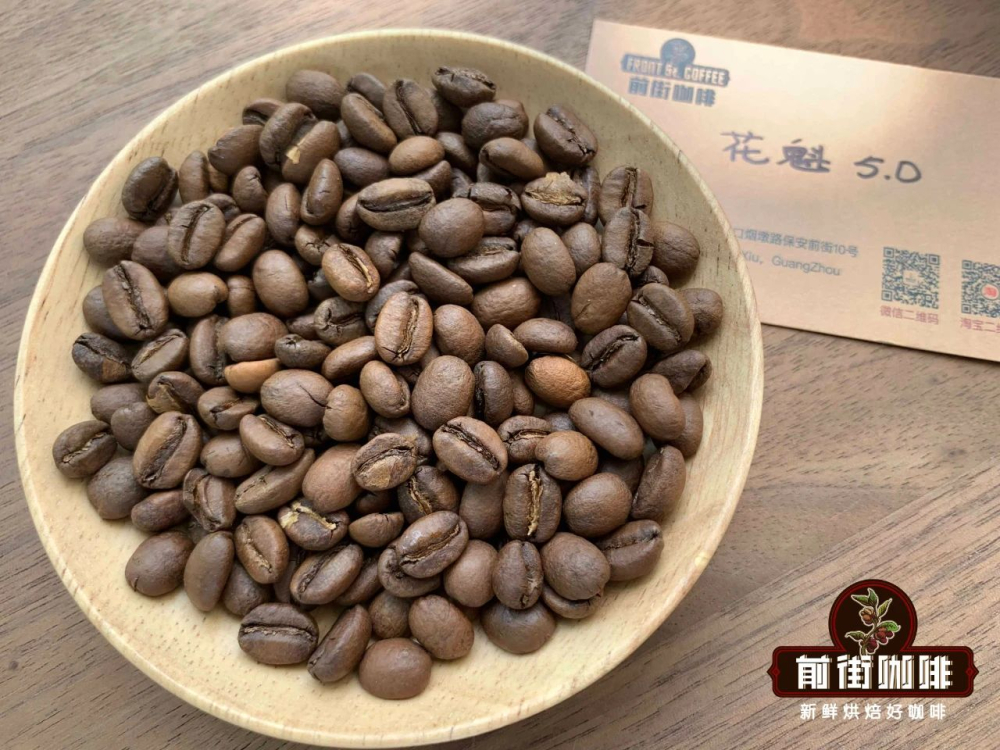
Parameters for brewing Ethiopian coffee in Qianjie:
Considering that Yega Chuefei coffee should be sour as the main flavor direction, Qianjie uses medium-light roasting in roasting. Washed Yega Chuefei Fruit Ding Cooperative Coffee beans use light roasting to retain more bright acidity and white flower aroma, while Sun Yega Chuefei Red Cherry Coffee beans are roasted in medium light, showing full sweet and sour berries.
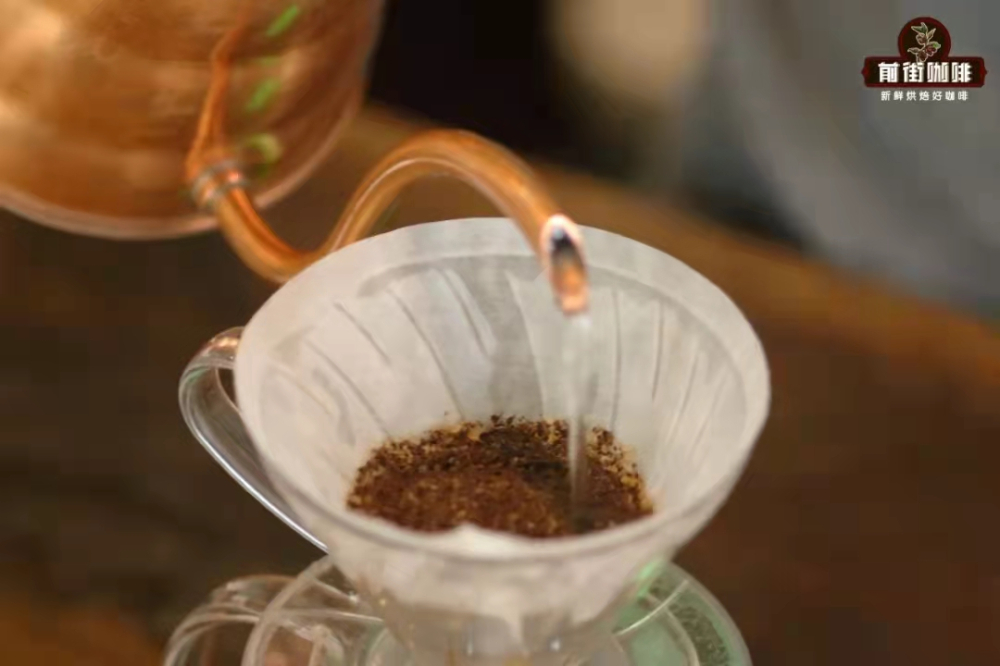
Because Yejia Chuefei uses shallow roasting, the coffee beans are hard and require 91 ℃ of hot water to stimulate the floral and fruity flavor of the coffee. Grinding degree Qianjie recommended medium fine grinding degree (Chinese standard No. 20 screen pass rate of 80%). Too thick to extract mellow substances, brewed coffee will appear thin. Too fine is easy to be over-extracted at high water temperature, and the coffee brewed is prone to bitterness.
The specific cooking parameters used in Qianjie are: V60 filter cup, water temperature 91 ℃, water powder ratio 1:15, powder quantity 15g, medium fine grinding degree (China 20 standard sieve pass rate 80%)
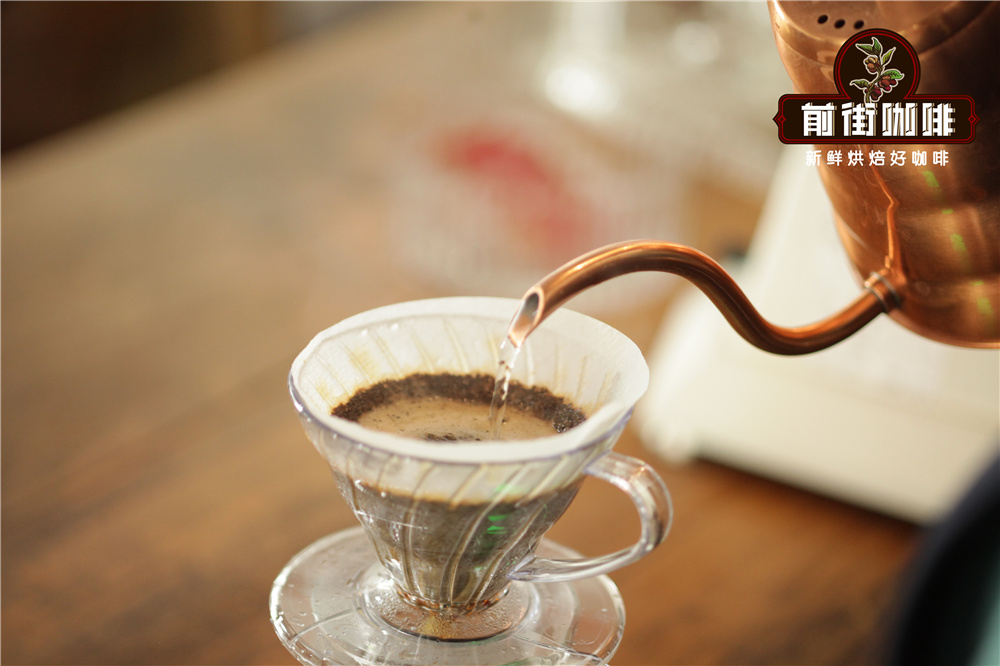
Qianjie coffee staged extraction: first, use 30g water to fully wet the powder layer in the shape of "hamburger" and steam for 30s; in the second stage, water is injected into 125g at 1: 00 "timer, then stop and wait for the water level to drop to 2 / 3 of the powder layer into the third stage; in the third stage, the water is injected into 225g when the timer is 390 / 40", and the total extraction time for coffee liquid to be completely dropped is 1 cup 3959 ". The total brewing time is 2 minutes 39 percent 00 ". Shake gently after the coffee is extracted, and then taste it until the coffee liquid is fully uniform.
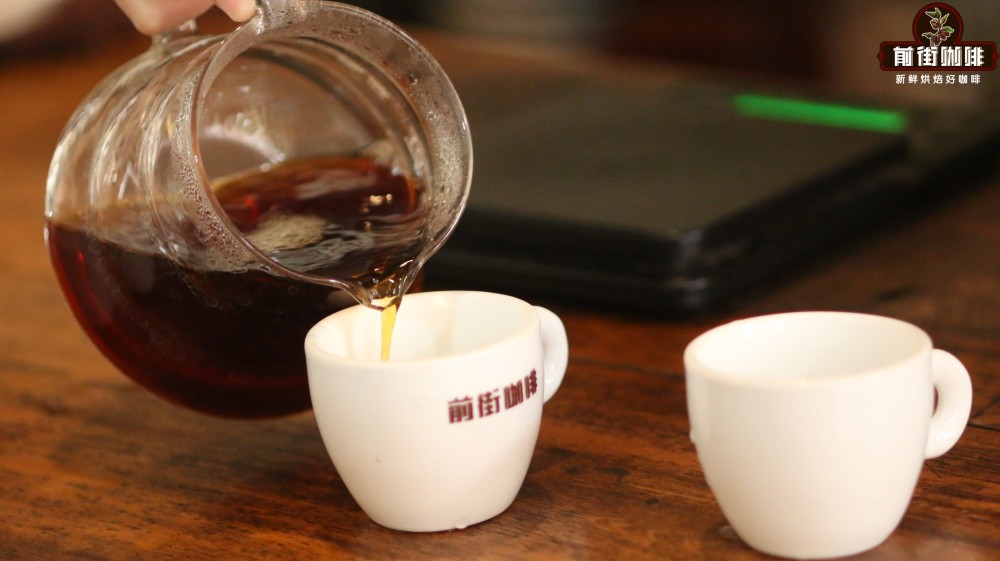
In front of the street, the flavor of Yega Xuefei Ding Coffee is berries, cream, honey, citrus, juice-like taste and bright acidity at high temperatures. When the temperature is slightly lower, it is berries, cream, smooth, citrus.
Qianjie Sunshine Sidamo Sakui 5.0Coffee flavor: light fermented wine, caramel will be heavier, taste will be rich and complex, honey sweet, cocoa rhyme with a touch of spice, body thick and lingering.
Suggestions for making coffee in front of the street:
To brew a good cup of coffee, you still need to pay attention to the freshness of the beans. Qianjie has always believed that the freshness of coffee beans has a great relationship with the flavor of coffee, so the coffee beans shipped in Qianjie coffee are roasted within 5 days. The purpose of Qianjie roasting is "freshly roasted coffee", so that every guest who places an order is the freshest coffee when he receives it. The bean cultivation period of coffee is about 4-7 days, so when the guest gets it, it is the time when the flavor is the best.
For those who need to be ground, Qianjie warmly reminds you that if the coffee beans are ground in advance, there is no need to raise the beans, because in the process of transportation, the pressure caused by carbon dioxide in the package can also make the coffee flavor round. so you can drink a cup of coffee as soon as you receive the coffee powder. But the coffee powder needs to be brewed in time, because the coffee powder oxidizes more quickly after contact with the air, that is to say, the flavor of the coffee will dissipate more quickly, and the flavor of the coffee is not so good. Therefore, Qianjie suggests buying whole beans, grinding and flushing now, so that we can better taste the flavor of coffee.
Professional coffee knowledge exchange more coffee bean information please follow the coffee workshop (Wechat official account cafe_style)
For more boutique coffee beans, please add private Qianjie coffee on Wechat. WeChat account: qjcoffeex
Important Notice :
前街咖啡 FrontStreet Coffee has moved to new addredd:
FrontStreet Coffee Address: 315,Donghua East Road,GuangZhou
Tel:020 38364473
- Prev

Introduction of Indonesian Coffee Flavor with Sweet Fruit introduction to Kahayang Gan Manor
Shade planting: there are shade tree species in the coffee garden, such as orange tree, avocado tree, banana tree, papaya tree, pineapple tree and several local flowers and herbs. Harvest time: raw beans in December, January and February each year. Appearance: emerald green grade: 18, 19 mesh plus average annual temperature: 25 C (daily temperature difference is about 10 C) annual rainfall: 2700 mm, volcanic ash porous water seepage geological treatment method: washing and drying
- Next

Indonesian Coffee Flavor and Taste Manor production area introduces Rasuna Wahana Manor
Unlike the water-washing and pressurized treatment commonly used in Indonesia, the coffee at WAHANA Manor is fully washed and treated with a new pulp removal machine. The machine, installed in 2009, can handle 25 tons of ripe coffee cherries per hour. Coffee cherries are picked when they are fully ripe, and processed raw coffee beans are separated by hand.
Related
- Does Rose Summer choose Blue, Green or Red? Detailed explanation of Rose Summer Coffee plots and Classification in Panamanian Jade Manor
- What is the difference between the origin, producing area, processing plant, cooperative and manor of coffee beans?
- How fine does the espresso powder fit? how to grind the espresso?
- Sca coffee roasting degree color card coffee roasting degree 8 roasting color values what do you mean?
- The practice of lattes: how to make lattes at home
- Introduction to Indonesian Fine Coffee beans-- Java Coffee producing area of Indonesian Arabica Coffee
- How much will the flavor of light and medium roasted rose summer be expressed? What baking level is rose summer suitable for?
- Introduction to the characteristics of washing, sun-drying or wet-planing coffee commonly used in Mantenin, Indonesia
- Price characteristics of Arabica Coffee Bean Starbucks introduction to Manning Coffee Bean Taste producing area Variety Manor
- What is the authentic Yega flavor? What are the flavor characteristics of the really excellent Yejasuffi coffee beans?

